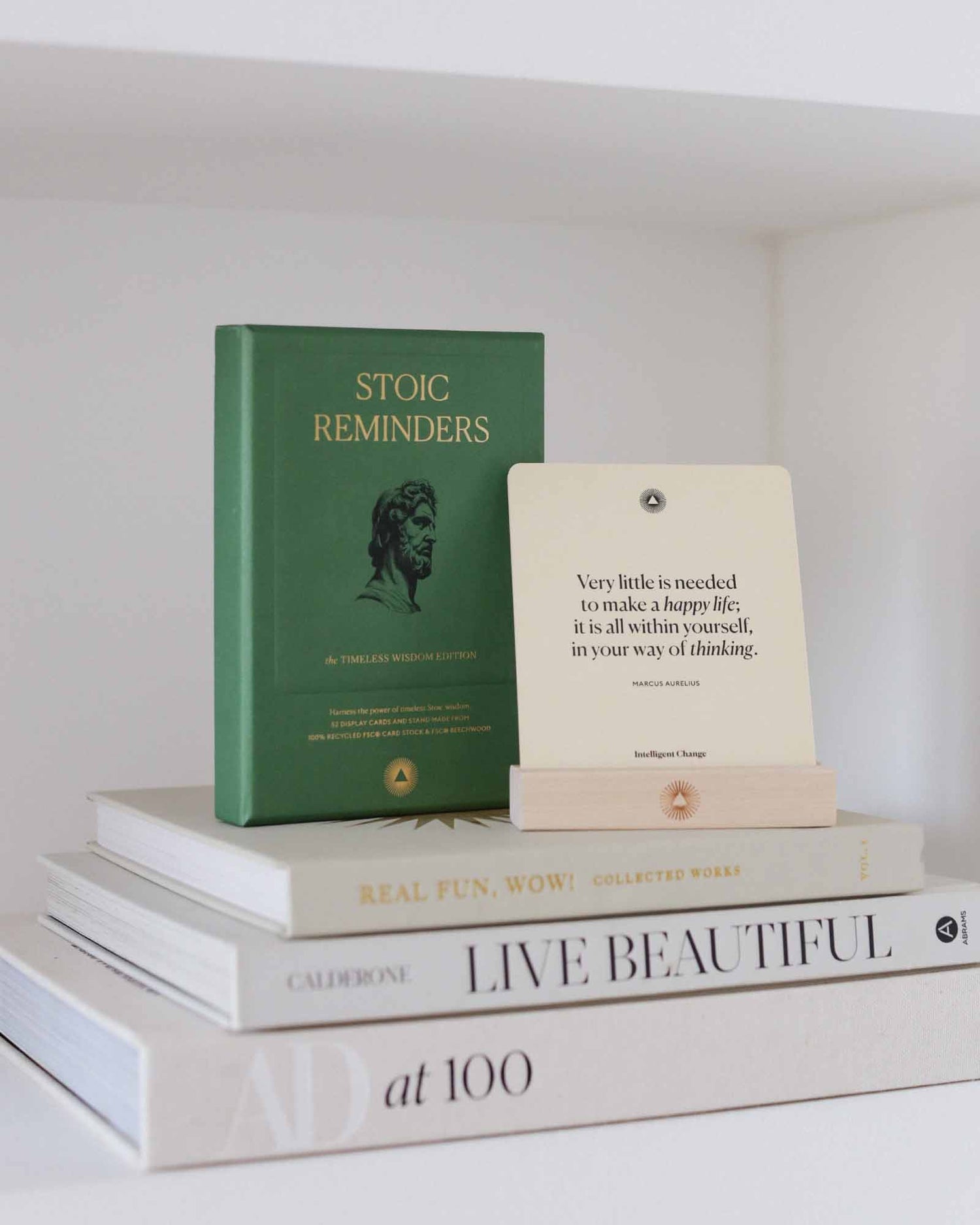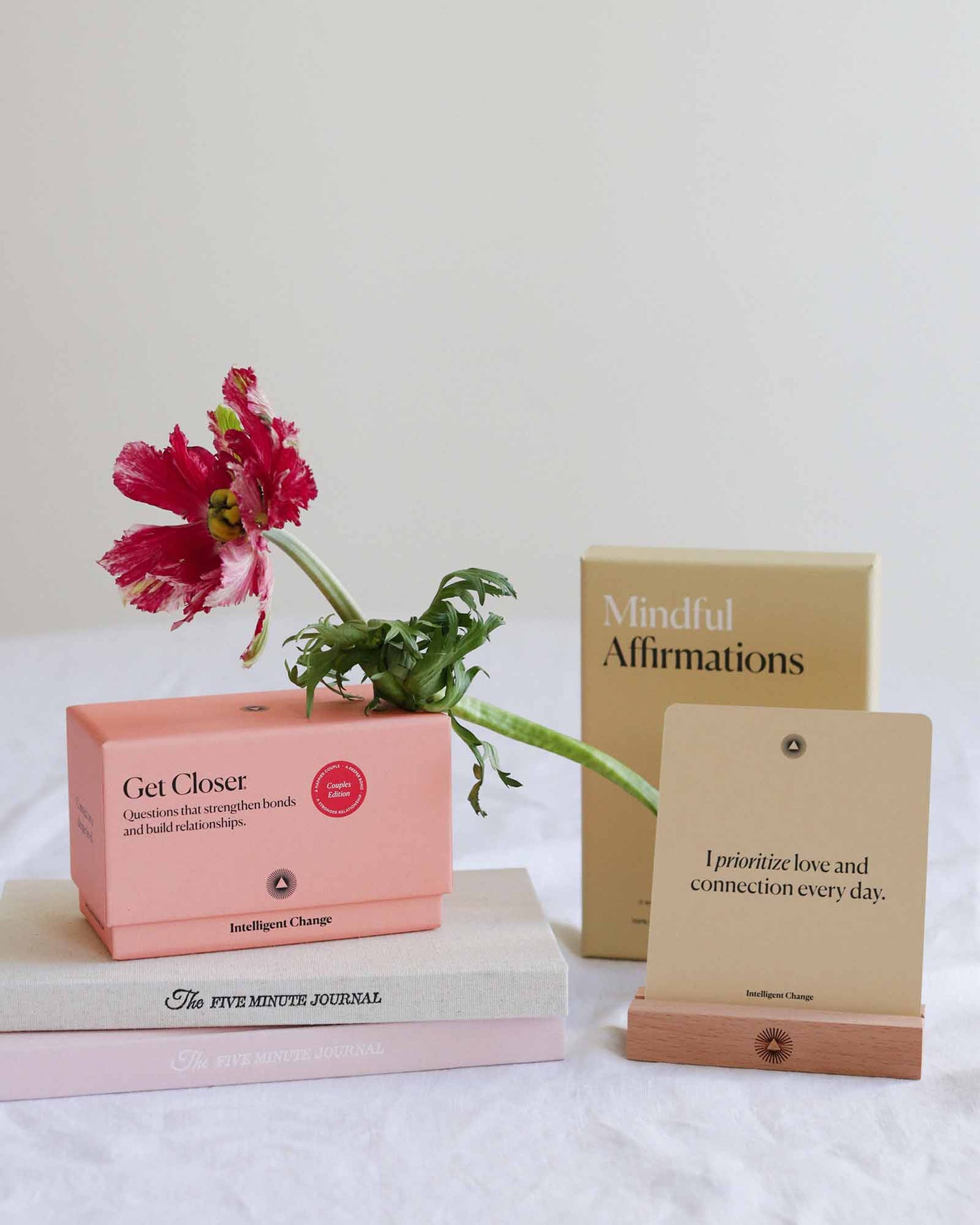Why Gratitude Is Important in Business
by Intelligent Change
Have you heard the saying: what you focus on, expands?
You may wonder, why is it relevant now? Aren’t we going to talk about gratitude and business? Exactly.
First, let us ask you something: what’s your “work personality”?
Are you mainly focused on problem-solving? Are emergency issues your main occupation, and you just play it like a video game: collect “points” mentally for every resolved task?
Well, that’s not a bad trait for someone who’s deep in the business. But, wouldn’t you agree that focusing mainly on problems will also expand the number of problems you’re dealing with? If your attention is constantly geared towards searching for unresolved issues, your mind will become more sensitive and start noticing them everywhere!
The same rule applies to positive behaviors, such as gratitude: if you focus on them, they will multiply as well.
Why Is Gratitude Important in Business?
The practice of expressing gratitude is far more often associated with personal relationships like friendships, partnerships, or family. You rarely hear the words “gratitude” and “business” in the same sentence, which is sad, because gratitude can sometimes play a crucial role in creating a healthy company culture and a productive working environment.
Yet, its role in business is often neglected. Recent research conducted by the John Templeton Foundation revealed that for Americans, the workplace is the least likely place to express gratitude.
Although as many as 93% of the respondents agreed that a grateful boss is more likely to succeed, and almost all of them agreed that a simple “thank you” at work made them feel valued and respected, only 10% were actually prone to express gratefulness. The majority, or 60% of the respondents, have never expressed gratitude at work, or have only done so once a year!
In general, practicing gratitude at work with our fellow team members makes us happier, improves our moods, and makes us feel more connected to others. It can enhance the sense of belonging and respect at work, which is related to higher job performance, less sick days, and lower turnover.
Research conducted by Plasticity Labs focused solely on the benefits of gratitude at work. Here are their key findings:
- A culture of gratitude plays a crucial role in the workplace: it predicts higher job satisfaction; Practicing gratitude at work makes the employees feel more grateful about their job in general;
- Practicing gratitude at work isn’t only related to current job satisfaction, but grateful employees also anticipate to be more satisfied with their jobs in six months’ time;
- Employees who practice gratitude at work have a stronger sense of community;
- Grateful employees tend to focus more on the things they appreciate at work, rather than those that annoy them.
Expressing gratitude doesn’t only affect the internal relationships between colleagues and management. They can also improve the relationship between the business and its customers, or strengthen the trust between partners or investors.
Gratitude and Business Examples
Gratitude as a Recipe for Success with Customers
In an interview for Medium, a business problem-solving specialist, Dr. Justin Wood, Th.D., explained how gratitude saved a restaurant with low chances of survival from closing down.
Dr. Wood was put in charge of a small breakfast team, which was one step away from being shut down. The team had a long list of chores to accomplish in only a few hours.
Apparently, it was a tough game, as the team wasn’t bringing much profit to the restaurant, and people’s jobs were at stake.
As crazy as it may sound, the first ace he pulled out from his sleeve was customer appreciation. He instructed the team to express gratitude and appreciation to every customer because the key to a profitable restaurant is satisfied and returning customers.
As the first month was coming close to an end, guess what happened?
They doubled the number of receipts from the previous month. By the end of the three-month period, they were setting continual records.
It took so little: a “thank you for coming”, a smile, and a regular check-up, and people immediately felt more appreciated as customers.
Gratitude Can Make You More Visible
Another great example comes from the Visibility Vixen CEO, Michelle Lewis. Her first years as an entrepreneur were tough. She had no one around to tell her what to do, and the business was not going very well at first. She spent months banging her head against the wall trying to realize what’s wrong and what should be changed.
It finally hit her—it was crucial to change her perspective, and gear it towards positivity. So, she did something very simple—set up hourly affirmations with phrases like “I welcome new members into my group every day”, or “every time I take care of myself, my income increases”, and so on. She was basically trying to stay grateful and appreciative of herself, although her business seemed to be going nowhere.
It felt crazy at first, but she had nothing to lose, and this gratitude ‘training’ seemed to work. After only a day or two—she started making sales! Today, she contributes this success to her enhanced positivity and the feeling of gratitude that others could feel as well. Gratitude can change everything.
A Grateful Team Is a Successful Team
Of course, gratitude can also improve internal relationships at work. CEO at AIMLeadership, Camile Preston, explained to Forbes how she uses gratitude to empower her employees when their productivity drops.
In 2017, she was about to publish a new book, while juggling a number of projects and trying to scale up her business. Although she is a high pace worker, she knew that not everyone on her team could follow up. When your team’s constantly two steps behind you, you have two options: the first one is to lash out: send emails with negative feedback about their performance or arrange a meeting to announce how poorly they’re doing. The other option is to do what Camile did: she reached out to them and expressed how grateful she is for their work.
Understanding the difference between giving negative feedback (“where’s the report you were supposed to submit?”) and being grateful (“I value your work, so if you need any help or support, please let me know”) is game-changing. The first results in lower engagement and substandard delivery, while the latter results in higher quality work, engagement, and trust!
Gratitude doesn’t only change the receiver, like the employee who receives appreciation and support from their boss, or the co-worker who’s been thanked by their colleague. Gratitude also changes the giver.
As New York Times’ best selling author Dan Heath nicely put in his book The Power of Moments: Why Certain Experiences Have Extraordinary Impact, giving thanks to someone is a special moment. He calls it “a defining moment”, in which you not only affect the receiver, but you also change yourself.
When we express gratitude, we become more vulnerable and authentic. The connection with the other person strengthens, by promoting trust and mutual respect.
Beautiful, right?
However, it’s understandable why expressing gratitude at work can sometimes be difficult. In business we’ve been taught to show confidence, decisiveness, and endurance, while suppressing our vulnerabilities and emotions. Showing the latter traits can be seen as a weakness..
So, in order to change the discourse, we need more examples of successful implementation of both gratitude leadership and gratitude as part of company culture and ethos.
How to Implement and Foster Gratitude in Business

Now that you’re familiar with all the amazing benefits of expressing gratitude at work, you’re probably wondering how to implement it.
Don’t worry, we’ve got you covered. Below is a list of tips and activities that can help you implement gratitude at the workplace.
These are useful for people at various roles in the company: decision-makers, directors, top management, HR managers, scrum masters, etc., but you can also implement some of them into your B2B, or B2C relations. They cover both group and in-office activities, and those that are more intimate and personal, like keeping a gratitude journal, to achieve gratitude leadership.
Five Good Things Weekly Review
How do you and the other employees finish your working week? Do you have any special activities?
We suggest implementing gratitude into your end-of-week roundup meeting!
Maybe you don’t have an end-of-week review meeting?
Great, it’s time to implement one and make it all about positivity.
For example, after making a short recap of everything you’ve done that week, take a couple of minutes and ask every employee (including yourself) to write down three work-related things they’re grateful for. This way, a working week ends on a positive note for everyone in the company.
In case your team usually works online you can praise those who give their best by using the 15Five Continuous Performance Management Software. There people can submit individual weekly check ins and reviews and high-five each other for making a difference in a certain week. This way, the team that works online can show appreciation amongst themselves and nurture positive sentiments.
Send out Personalized “Thank You” Letters
This one can be used both internally, with the employees, and externally, with your business partners and customers.
Internally, it can be a part of team-building activities, similar to Secret Santa: everyone gets one person from the workplace they need to write a personalized “thank you” letter to! It can be anonymous or not depending on the writer and their readiness to open up. Either way, the activity can be very emotionally charged, as it makes people open up, become vulnerable, and brings them closer to each other.
Many years ago ago, psychologist Martin Seligman conducted research with clinical patients about gratitude. It revealed that writing and delivering letters of gratitude can enhance our happiness.
Of course, there is a difference between mister Seligman’s intervention and this exercise. What he tested was a psychotherapeutic intervention, and we suggest something more mild—a simple, grateful, team-building activity.
The same activity can be applied externally—with your business partners, or customers. This one is very simple: after completing an important business milestone, or a joined project, consider sending out a personalized “thank you” card to your business partners. It shouldn’t be a generic “thank you” card, but rather personalized, stating why exactly you’re thankful for, and what did they help you accomplish.
When it comes to customers, it’s not that simple—you probably can’t write a new letter for each person who has purchased your product or used your service. If you can—even better.
What you can do for sure is write a nice “thank you” letter that you’d send to all customers, but address it to a specific person. It doesn’t matter whether you send it through email, or to their physical address, as long as you express your gratefulness for them being your customers. The goal is to make them feel appreciated by emphasizing the positive impact they had on your business.
Model Grateful Behavior
If you want to instill gratitude into your workplace, you need to start from yourself. Be the change you want to see in the world.
If you model aggressive behavior and instill fear among your employees, they’ll probably be stressed out at work and take it out on each other. On the other hand, if they hear a “thank you” and “keep up the good work” from time to time, it’s much more likely they’ll accept it as an office codex. As we mentioned already, expressing gratitude at work can feel intimidating, or too exposing. That’s why most people need to have a grateful leader to start expressing gratitude themselves.
So, how do you model grateful behavior?
For instance, every time you’re hiring someone new, ask them how they would like to be appreciated for their work. What motivated them?. Or, when someone is leaving the company, you can throw them a goodbye party and appreciate everything they did for the company. Weekly reviews, staff meetings, or one-on-one conversations are also great opportunities to say “thank you” to your co-workers!
Keep a Gratitude Journal

Keeping a gratitude journal is a magnificent way to shift your mindset into a state of greater positivity. If you think that journaling about the things you’re grateful for doesn’t go hand in hand with a serious entrepreneur, that’s where you’re wrong.
Many successful business people keep a gratitude journal. One of them is Tim Ferris.
He uses The Five Minute Journal to gain focus and appreciation. For example, in order to stay on track with his journal, he writes prompts on top of every page, in advance. Also, he focuses on the small things he’s grateful for every day—a birdsong he overheard outside, or the rain that helped him fall asleep.
One trap many gratitude journaling beginners tend to fall into is writing way too general prompts. What Tim Ferris recommends is to get more specific and be very concise when reviewing your days. Write precisely what you’re grateful for that day.
If you decide to keep a gratitude journal, make sure to cover both your personal and your professional life. If you get really excited about it, you can even keep two journals.
One way or another, if you want to be a positive leader, keeping a gratitude journal is a must. Like we said in the beginning—what you focus on, expands. Keeping a gratitude journal is an excellent way to start focusing on the good things that you’re grateful for, and allowing them to expand in your mind:
- The colleague who completed their task before the deadline;
- Your assistant who brings you coffee every morning;
- That customer who posted a super-detailed review of your product, and now you can use it to make improvements;
- That employee who’s not meeting those deadlines, but they’re really trying hard, and so on.
Being aware of the good things at work will help you become a grateful and positive leader, who’s capable of installing an attitude of gratitude at their workplace!
Another successful person who relies on the power of gratitude journaling is Oprah Winfrey. During the 80’s and the 90’s, she kept a gratitude journal for ten consecutive years. Then her life got busy, and she spent less and less time with her gratitude journal until she completely cut off that habit.
Many years later, she came across her old journal and read some of the entries. They brought up old memories, and she realized that at the moment she rarely felt thankful for the “little things”. So, she decided to get back to gratitude journaling.
She says: “You radiate and generate more goodness for yourself when you're aware of all you have and not focusing on your have-nots”.
If you’d like to find out more about keeping a gratitude journal, pay a visit to our blog and read our Ultimate Gratitude Journal Guide. You’ll discover useful prompts, templates, types of journals, and of course, learn about the benefits of gratitude journaling, and how to properly keep one!
If you’re more of a tech-savvy and would prefer to keep your journal in digital format, check out The Five Minute Journal app, available for iOS and Android.
The app is just a digital version of the regular gratitude journal—The Five Minute Journal, but it comes with certain benefits, like setting reminders, setting a security lock, adding photos, and having your journal at hand in any given moment.
A Small Take Away
Thank you for taking the time to read this article. Did it inspire you to instill some positive changes at your workplace?
Instilling gratitude at the workplace is actually easy—it may be awkward in the beginning, but its long term benefits are immeasurable!
To become more positive yourself—start keeping a gratitude journal. Once you get in the rhythm with it, you’ll see how other things come naturally: smiling, saying “thank you” on a regular basis, offering support. Soon, you’ll become the ambassador of positivity and gratitude, and a proper model for your team!








